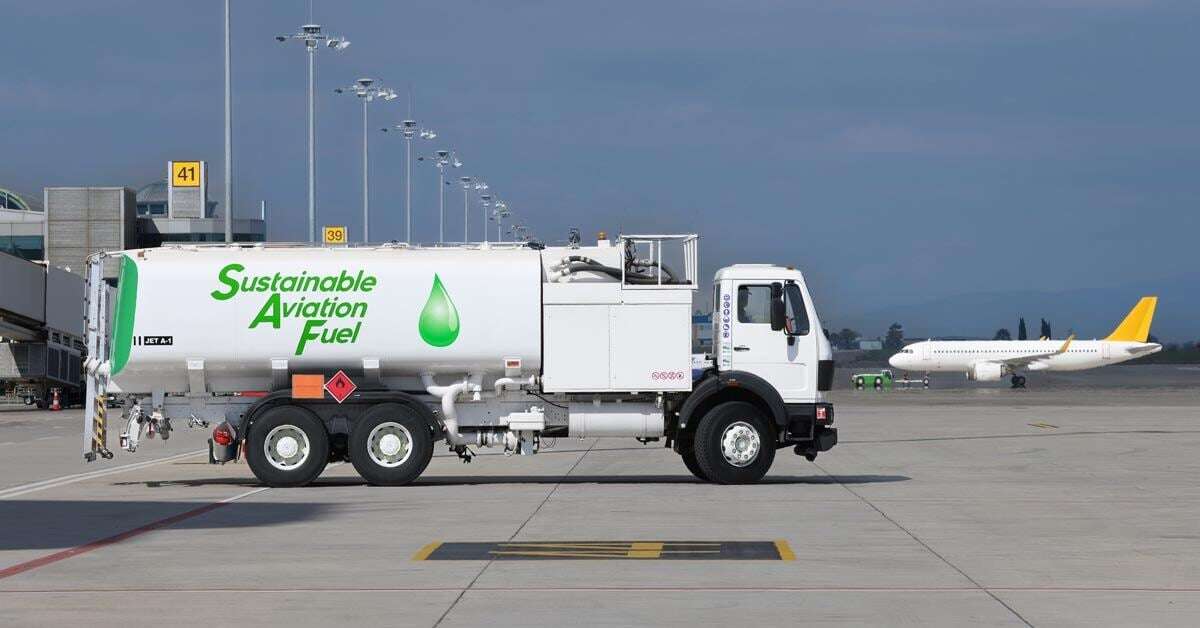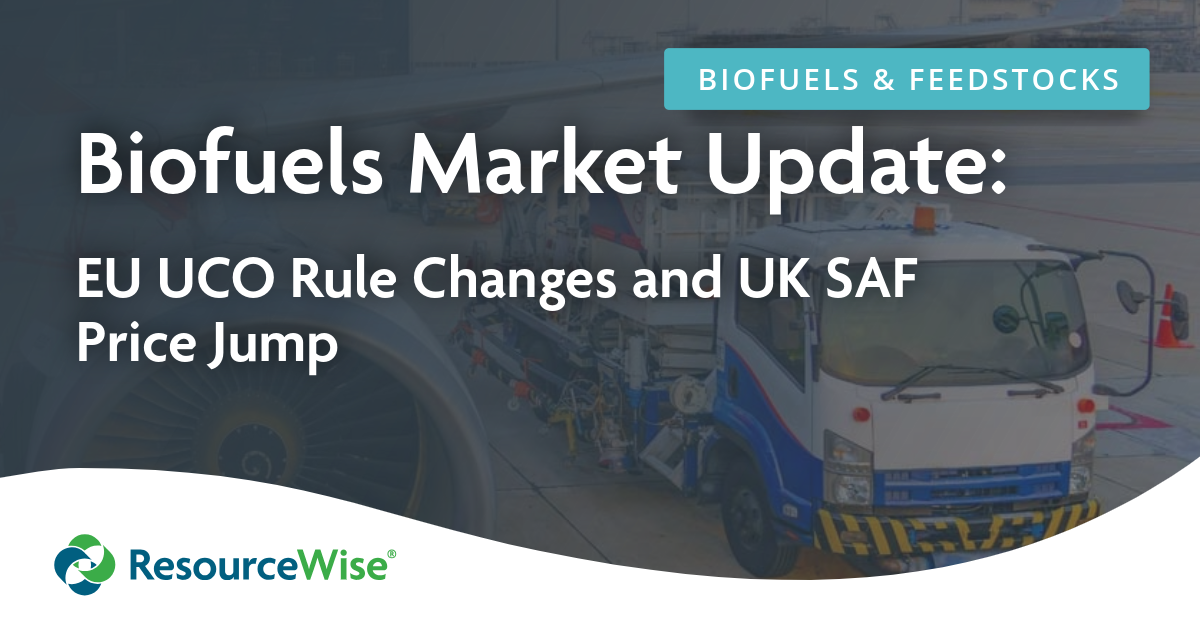3 min read
SAF Production Lower Than Expected in 2024, But Things Are Looking Up
ResourceWise
:
Dec 13, 2024 12:00:00 AM

Sustainable aviation fuel (SAF) has been gaining serious momentum in its production and attention across the global airline industry. This comes as no surprise with mandates and blending requirements on the horizon for many countries and regions.
While production numbers confirm growth in the market, the pace of this growth comes at a slower-than-anticipated pace. What is the root cause of this mismatch in projections and real-world production, and what does it mean for the market moving into 2025?
SAF Production by the Numbers
A report from the International Air Transport Association (IATA) noted that 2024 global SAF production hit 1 million metric tons, or roughly 1.3 billion liters. This marked a near double increase in output from the 0.5 million metric tons (600 million liters) produced last year.
Despite the impressive year-over-year growth, these figures fell short of earlier projections. Industry leaders had initially expected SAF production in 2024 to reach 1.5 million metric tons (1.9 billion liters).
The lower-than-expected output can be attributed to delays in ramping up operations at SAF production facilities, particularly in the United States. Those facilities are now expected to scale up during the first half of 2025.
Looking to next year, production is expected to rise to 2.1 million metric tons (2.7 billion liters). The amount covers approximately 0.7% of global jet fuel supply and reflects 13% of renewable fuel capacity.
Why Has SAF Progress Been Slow?
While noteworthy progress certainly has been made, SAF production is expanding at a slower pace than anticipated.
Several roadblocks are behind the production shortfall.
In some cases, mixed signals from governments appear to be discouraging oil companies from fully committing to renewable fuel. Many of these companies can still benefit from subsidies aimed at fossil fuel exploration and extraction.
Meanwhile, SAF investors seem hesitant to go all-in without guarantees of quicker returns. Even as airlines increase their partnerships and purchasing, hesitance continues to define investor confidence. This uncertainty has only grown in sectors like biodiesel as questions remain about Trump’s policies when he takes office in 2025.
Related: 2025 US Biodiesel Market: 2024 Ends Strong As Uncertainty Remains
Airlines themselves also share some of the responsibility for not meeting SAF expectations. Most airline corporations operate on slim margins, averaging just a 3.6% net profit. This makes SAF integration a long-term game, where slow and steady growth may be more attainable than a rapid, high-risk approach.
Despite the challenges, there’s still a compelling business case for SAF—especially for those who recognize the long-term potential of decarbonization. Governments will assuredly play a pivotal role in driving this transition by phasing out fossil fuel subsidies and creating targeted incentives to boost renewable energy production.
Aviation and the Global Energy Transition
To achieve net-zero CO2 emissions by 2050, the aviation sector will require significant investment in renewable fuel infrastructure.
IATA estimates suggest that between 3,000 and 6,500 new facilities will be needed to produce SAF, renewable diesel, and other clean fuels. This level of expansion would require annual capital expenditures of about $128 billion over the next three decades.
Although that number seems unruly at first glance, it’s still considerably less than the yearly investments made in solar and wind energy. Both of these industries averaged a combined $280 billion per year between 2004 and 2022.
The Path Forward
To accelerate SAF adoption and renewable energy production, governmental cooperation is fundamental. Clear policies and financial incentives can propel the industry forward, much like how solar and wind energy scaled up in recent years.
Factors like new technology and policy likely means that SAF may require fewer resources than earlier clean energy efforts. It could be funded, in part, by reallocating subsidies currently given to fossil fuel operations.
Overall, production numbers are still good news. Progress is being made, albeit slower than desired, and the framework for scaling renewable energy already exists.
SAF represents a crucial piece of the aviation industry's decarbonization strategy. With the right leadership and investment, it has the potential to drive substantial sustainability benefits in support of the global energy transition.
Get a Look at the 2025 SAF Market with On-Demand Webinar
With this much uncertainty in the biofuels market, how can you make confident decisions and map out your strategy?
Get a direct look into the year ahead with ResourceWise’s on-demand webinar, “SAF Market Prepares for 2025 Takeoff.”
Presented by Mat Stone, VP of Business Development and Low Carbon Fuels, the webinar offers a comprehensive overview of what you need to know relative to renewables and aviation.
- Current state of the SAF market
- 2025 global market projections
- Impact of the world's first SAF mandates
- Supply and demand dynamics in the EU/UK, US, and Asia markets
- Future production pathways and pricing strategies
Don’t fly blind in your planning—view the webinar today to get valuable market insights for your business.






